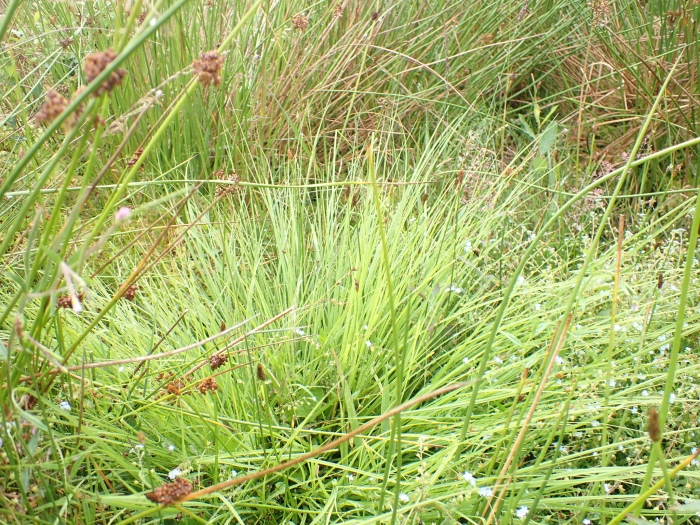Lesser Tussock-Sedge
(Carex diandra)
Lesser Tussock-Sedge (Carex diandra)
/
/

© Skjold Søndergaard
CC BY 4.0
Image By:
© Skjold Søndergaard
Recorded By:
Copyright:
CC BY 4.0
Copyright Notice:
Photo by: © Skjold Søndergaard | License Type: CC BY 4.0 | License URL: http://creativecommons.org/licenses/by/4.0/ | Uploader: skjoldalsted | Publisher: iNaturalist |



















Estimated Native Range
Summary
Carex diandra, commonly known as lesser tussock-sedge or lesser panicled sedge, is a perennial herb native to a variety of wetland habitats including fens, sedge meadows, wet prairies, marshes, and along the margins of lakes and rivers in the Northern Hemisphere. This includes regions in North America, Europe, Asia, and New Zealand. It typically forms dense clumps with triangular stems that can reach up to 35 inches in length. The leaves are distinctive with white-edged, red-dotted sheaths and can grow up to 12 inches long. The plant produces a simple or compound inflorescence with several clusters of stiff, light brown spikes that are not particularly showy but are of ecological importance.
Lesser tussock-sedge is valued for its role in wetland ecosystems, providing habitat and food for wildlife. It is used in restoration projects to stabilize soil and improve water quality by filtering pollutants. In cultivation, it requires consistently moist to wet soil conditions and can tolerate a range of light conditions from full sun to part shade. It is not commonly used in ornamental gardening due to its specific habitat requirements and less decorative appearance. However, it can be an excellent choice for naturalized areas or rain gardens. Carex diandra is generally low-maintenance but may require management to prevent it from dominating smaller plants in a mixed planting. It is not known for serious pest or disease problems.CC BY-SA 4.0
Lesser tussock-sedge is valued for its role in wetland ecosystems, providing habitat and food for wildlife. It is used in restoration projects to stabilize soil and improve water quality by filtering pollutants. In cultivation, it requires consistently moist to wet soil conditions and can tolerate a range of light conditions from full sun to part shade. It is not commonly used in ornamental gardening due to its specific habitat requirements and less decorative appearance. However, it can be an excellent choice for naturalized areas or rain gardens. Carex diandra is generally low-maintenance but may require management to prevent it from dominating smaller plants in a mixed planting. It is not known for serious pest or disease problems.CC BY-SA 4.0
Plant Description
- Plant Type: Grass
- Height: 1.5-2 feet
- Width: 1-2 feet
- Growth Rate: Slow
- Flower Color: N/A
- Flowering Season: Spring, Summer, Fall
- Leaf Retention: Deciduous
Growth Requirements
- Sun: Full Sun, Part Shade
- Water: High
- Drainage: Fast, Medium, Slow
Common Uses
Erosion Control, Low Maintenance, Water Garden
Natural Habitat
Native to fens, sedge meadows, wet prairies, marshes, and along the margins of lakes and rivers
Other Names
Common Names: Lesser Tussock-sedge, Greater Tussock-sedge
Scientific Names: , Carex diandra, Carex bernardina, Carex diandra f. conguesta, Carex diandra f. longibracteata, Carex diandra f. major, Carex diandra f. tenella, Carex diandra var. ampla, Carex diandra var. ampla, Carex diandra var. crassior
GBIF Accepted Name: